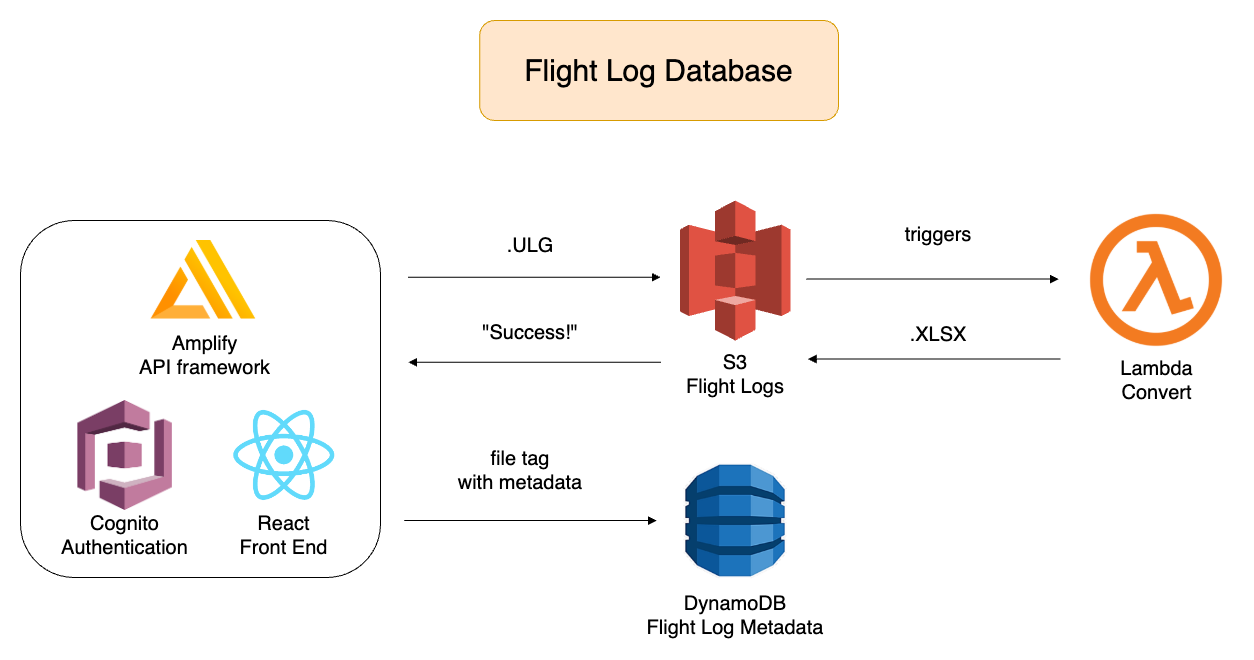Project Lead
Client: Rhoman Aerospace
Goal: Build a web app that enables machine learning analysis of drone flight logs.
Technologies used: AWS (API Gateway, Lambda, S3, DynamoDB, EC2), React, Flask
In the summer of 2021, I interned for a drone company that needed to store information generated by its fleet to analyze for tuning flight parameters. I envisioned a database solution that encompassed a pipeline that transfers data between a drone with a raspberry pi and a python script that runs predictive maintenance. I drafted a blueprint to communicate the design with the founder and the rest of the team.
Components:
Database: AWS DynamoDB stores drone specs; S3 stores flight logs
AI optimization: Hosted on an EC2, waiting behind Flask to be invoked. Run optimization with flight logs on database.
Web App: View contents of database. Invoke AI.
I collaborated with a hardware engineer and an artificial intelligence engineer to finish the pipeline. To showcase our work, we built a web app that lets clients view and choose their data and run a predictive maintenance check with a click of a button.
The separation between the predicted and actual curves indicate that the engine is not performing optimally.
The project was selected to be developed as the company’s first minimum viable product.
Because it would be offered to clients, it had to enable them to upload and download their logs. They had to be queried conveniently in the future, so the founder suggested adding tags. I designed a schema so that the flight logs would be linked through filenames to their tags on a NoSQL database. An AWS architect validated my decision.
The product had to be secure from public access, so my teammate suggested Amplify. It had the additional benefit of helping to deploy changes more easily, and easily integrate Cognito to restrict access to data by client.
Enables uploading to and downloading from the cloud. In addition, the upload triggers a conversion to .XLSX for clients who want to use that format.




